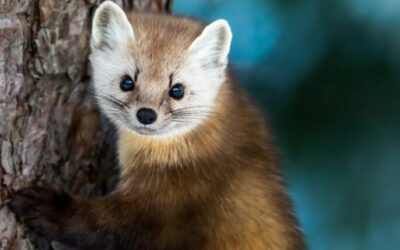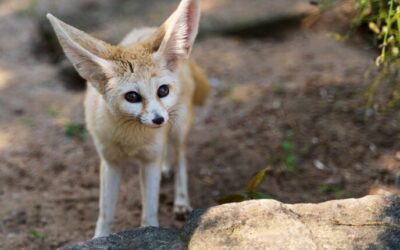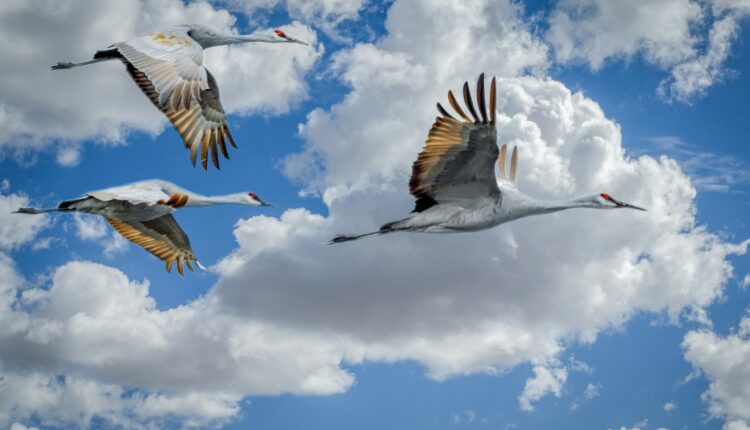
Photo courtesy of Chris Briggs/Unsplash.
From butterflies to birds, Wisconsin’s home to some of the most fun-to-watch migrating animals, and you don’t want to miss these eight this fall.
Just as we change many aspects of our daily lives in the winter, such as spending more time indoors and dressing entirely differently, many animals have to adapt to colder weather. Many do this by migrating, leaving their home for the winter, and staying somewhere warmer until spring. Luckily for us Wisconsinites, our abundance of forests, lakes, and nature in general means we have plenty of good opportunities to see animals coming and going in the fall. (That’s right: To some animals, Wisconsin is the warmer place — a respite in the colder months. Can you imagine?)
What makes fall migrations even better is that they’re the perfect opportunities to throw on a coat and get in some animal-watching. The weather isn’t too cold yet, and you should be able to spot migrating animals pretty much anywhere in the state — just make sure you stop for a hot cup o’ joe or hot cocoa on the way. So, without further ado, here are eight animals you won’t want to miss this fall.
1. Canada Goose
Canada geese, as their name implies, live in Canada throughout the majority of the year, but they swoop down to Wisconsin and other Midwestern states in the fall to wait out the cold winter months before heading back across the border. These birds are similar to tundra swans, which you can also witness throughout Wisconsin in the fall, but instead of being white all over, they feature a lot more brown and black down. This color gets darker as it goes down the goose’s body before getting fully black at the end of its body. Similarly, its head is black, but the Canada goose has a white patch that goes under its chin area.
You can see the Canada goose in all its glory from September onward, though they appear in the greatest numbers beginning in October. According to the Wisconsin Department of Natural Resources, the Horicon Marsh is a key place to view Canada geese aplenty, as hundreds of thousands gather in this wildlife area in the fall. You can see them in the early spring, too, but who could resist goose-watching in the fall, especially at a march? Colorful levees, cozy jackets, and geese honking the night away? Yes, please!
2. Monarch Butterfly
As the only one to migrate the same way birds do for the colder seasons, monarchs are one of the most interesting butterfly species. Monarch butterflies live across the Midwest, notably en masse in Wisconsin, and they travel south — generally to Mexico — for the winter, all before returning to their Wisconsin roots come spring. That’s right: These little stunners can travel thousands of miles with their small, light wings. Talk about the perfect combination of beauty and power!
Monarch butterflies are most easily identified by their orange-and-black color scheme, and they’re larger than many other butterfly species, making them pretty hard to miss. If you’re looking to spot them on their migration journey, simply head toward water. Wisconsinbutterflies.org notes that these critters often congregate around Lake Michigan, the Mississippi River, and the Wisconsin River. According to the Wisconsin Department of Natural Resources, a large number of monarchs also call the area south of Eau Claire home, as a planned power plant that never materialized laid the perfect foundation for them to flit around freely.
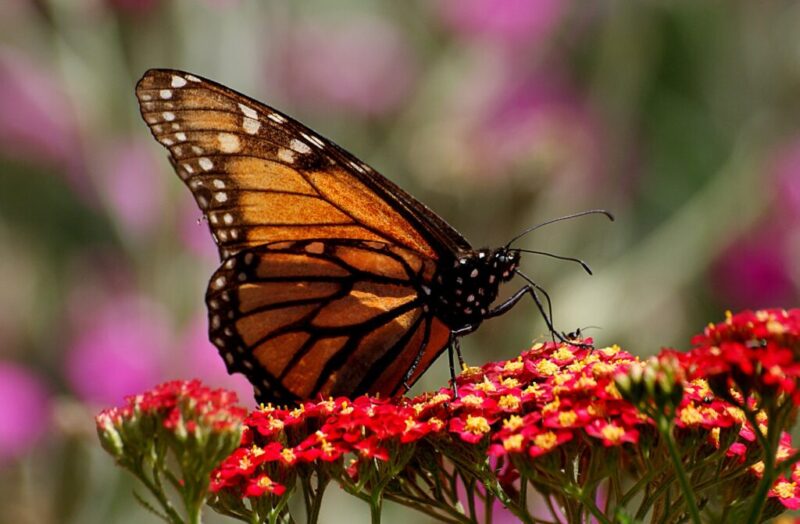
Photo courtesy of Bernard Spragg/CC0.
3. Sandhill Crane
If geese and swans are so yesterday’s news to you, you should scope out some sandhill cranes this fall. These birds are generally larger than swans and geese, with their wingspan reaching up to 7 feet wide. With a size like this, they might even be easier to spot than the other entries on this list! Just look out for pops of red, as sandhill cranes have a patch of red on the top of their head. Many also have yellow plumage under the red, which wraps under their chin like a buckle. However, some sandhill cranes’ under-chin patches look browner or more muted, so it’s better to look out for the red patch than the yellow.
Where can you find these red-headed beauties, you ask? You can start by looking for dinosaurs in the sky. We’re mostly joking, but some Redditors have described sandhill cranes as resembling “pterodactyls when they fly.” The good news, too, is that Redditors have described them as “friendly,” though they offer a key warning: “Just don’t get too close to their young.” You can find these birds in “large wetland areas,” according to a pamphlet published by the U.S. Department of Agriculture in partnership with the University of Wisconsin-Madison. These areas include the Sandhill State Wildlife Area, White River Marsh, and Crex Meadows, among others throughout the state.
4. Green Darner
The green darner is an emerald-cloaked species of dragonfly that buzzes its way around Wisconsin each year, and like the monarch butterfly, it’s on the larger side of the scale when compared to other types of dragonflies. It’s perhaps because of their size that they’re able to travel so far. Their wings might be small compared to birds, but scientists have documented them traveling almost 100 miles in a single day, making them quite the fast insect. If you head out to see them, keep your eyes peeled — you don’t want to blink and miss these quick-zipping beauties!
According to The Nature Conservancy, your best bet for catching green darners in action is to check out Green Bay and other sources of water. These dragonflies are drawn to water, and they’re likely to be found around humid, marsh-y areas. Because of this, you might catch some green darners and Canada geese at the same time! You can also find them at the Forest Beach Migratory Preserve, according to a blog post penned by The BugLady and published by the University of Wisconsin-Milwaukee.
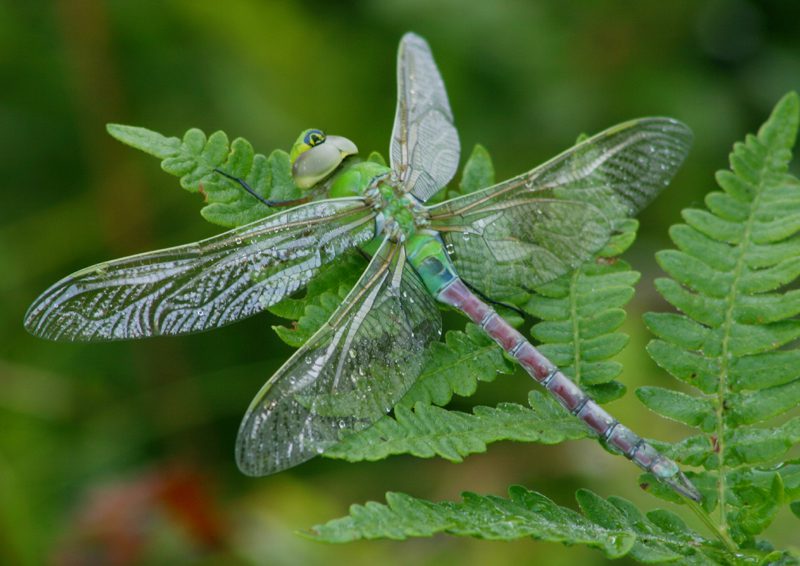
Photo courtesy of U.S. Fish and Wildlife Service Headquarters.
5. Warblers (of all kinds!)
Wisconsin is home to many warbler species, and they all migrate in the fall, so we couldn’t just pick one. There’s the Kentucky warbler, cerulean warbler, Tennessee warbler, orange-crowned warbler, and yellow-rumped warblers, among others. These species have slight differences — the orange-crowned warbler has a small orange patch on its head, though it isn’t seen often, and the Tennessee warblers tend to be more muted with grayer plumage — they’re all small birds that generally have the same body shape, face shape, and color palette. More specifically, they don’t typically exceed 10 inches in length, and they often have rotund bodies rather than the slimmer, arrow-like appearance of other types of birds.
Thankfully, the abundance of warbler species in Wisconsin means they can be seen preparing to migrate all over the state this fall. You can see them in wooded areas just as much as you can closer to civilization, and they look different enough from the following small birds on our list that they should be distinguishable. If you want to chase a specific species, head toward the Mississippi River, as the Prothonotary warbler is known to make the river its breeding ground, according to the Wisconsin All-Bird Conservation Plan.
6. Swainson’s Thrush
Next up on our small-bird procession is the Swainson’s thrush, a tiny, tan bird that’s native to Wisconsin but flies south for the winter. Swainson’s thrush is not to be confused with the grey-cheeked thrush, though. The latter species possesses a “grayer face and a thinner grayish eyering,” according to All About Birds. Meanwhile, the Swainson’s thrush has considerably lighter feathers and a lighter face. Despite being rather small, the Swainson’s thrush is medium-sized compared to other thrushes, and as a songbird, its voice typically resembles a flute. If you hear some cheeky music near some trees, you may have stumbled upon one!
Generally, Swainson’s thrushes are native to Wisconsin’s northern counties, and they’re found near “older wet forests,” according to the Wisconsin Department of Natural Resources, as these sites are where they breed. Door County, in particular, has reported cases of Swainson’s thrushes hanging out in folks’ backyards, so you may not even need to strap up your hiking boots to find them. To identify these cuties, just listen for high-pitched chirps that border on true birdsong. If you’re curious what that sounds like, you can check out audio samples on the National Audubon Society’s website.
7. Acadian Flycatcher
Last up on our tour of Wisconsin’s tiny migrating birds is the Acadian flycatcher, a small, green-tan species with white plumage on its underside that eats, as its name suggests, flies. As explained by All About Birds, the Acadian flycatcher has a rather impressive wingspan for its genus, and they often congregate around bodies of water like rivers and swamps, which Wisconsin has plenty of. In the winter, they flock to tropical weather, but in the fall, you can catch them snatching up their final Wisconsin insects of the year before braving their southward journey.
Unlike the Swainson’s thrush, Acadian flycatchers are more common in the southern half of Wisconsin. Avid bird watchers and bloggers have noted that this species doesn’t tend to reside north of Rib Mountain National Park, which is in Wausau — nearly smack-dab in the middle of the state. But there do appear to be plenty of these little insect-eaters at the national park, and since it’s in the middle of the state, there’s pretty easy access for everyone.
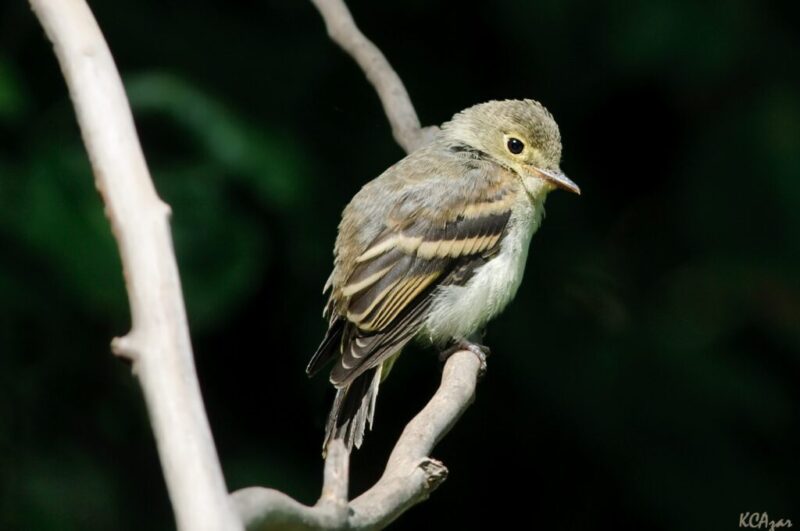
Photo courtesy of Kelly Colgan Azar/CC BY-ND 2.0.
8. Turkey Vulture
Our small-bird tour is over, but that doesn’t mean we’re done with birds quite yet. That’s because the turkey vulture — a considerably larger bird than warblers and flycatchers — also migrates in the fall, and it’s a particularly interesting one to scope out. It’s almost like the sandhill crane in that people compare the turkey vulture to dinosaurs, and in a way, it’s not too far off. Local publications like the Door County Pulse have even described turkey vultures as roaming the skies “since prehistoric times.” If that sounds like something you’re interested in, why not commit to a tour de dinosaur this fall with some turkey vulture and sandhill crane viewing?
Like sandhill cranes, turkey vultures also have a red head, so they should be similarly easy to spot. The rest of their body is covered in black feathers, and they have a short, cream-colored beak. You could see them circling roadkill or scavenging food from dumpsters, and there really isn’t any shortage of them. According to the Hawk Mountain Sanctuary Association, turkey vultures are native all across both North and South America, and their peak migration times are from mid-October to mid-November, so this period would be the best to see them in action. Luckily, you should be able to see them state-wide, meaning there’s no need to travel anywhere special just to see these raptors glide toward sunnier days.
This article first appeared on Good Info News Wire and is republished here under a Creative Commons license.
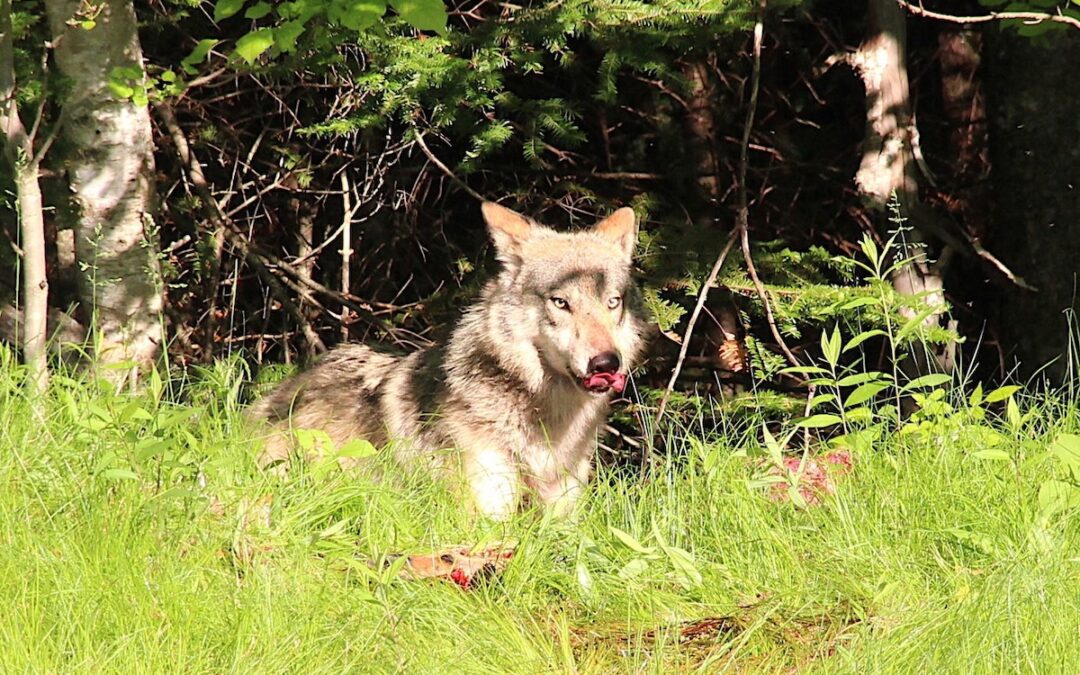
DNR releases updated Wisconsin gray wolf population estimate
The gray wolf in Wisconsin and most other states has been protected under the federal Endangered Species Act since February 2022. Wisconsin had an...
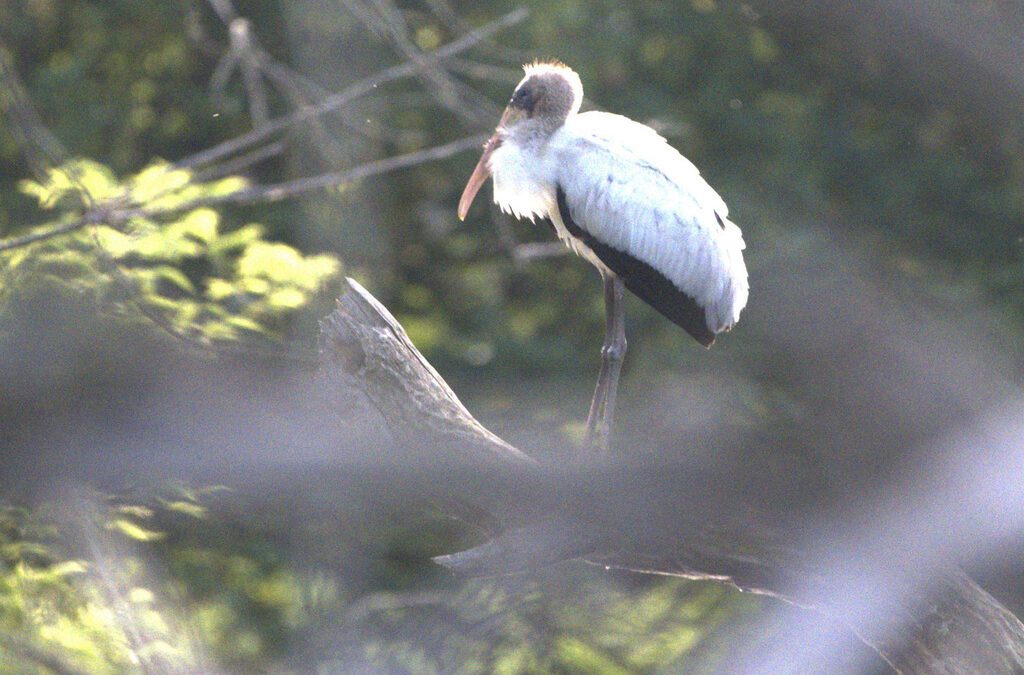
Deer hunter discovers rare subtropical wood stork in the wilds of Wisconsin
MADISON, Wis. (AP) — A very rare and apparently very confused subtropical wood stork somehow found its way to the wilds of Wisconsin. A hunter...

Go Batty: October is Bat Appreciation Month
While Halloween is undoubtedly the biggest jewel in October’s crown, there’s another reason to celebrate it: October is Bat Appreciation Month....

The Green Bay Guide: The best animal shelters, according to our readers
We asked our readers to tell us their favorite Green Bay animal shelters. Here's what they said. Green Bay is home to a community that deeply cares...


